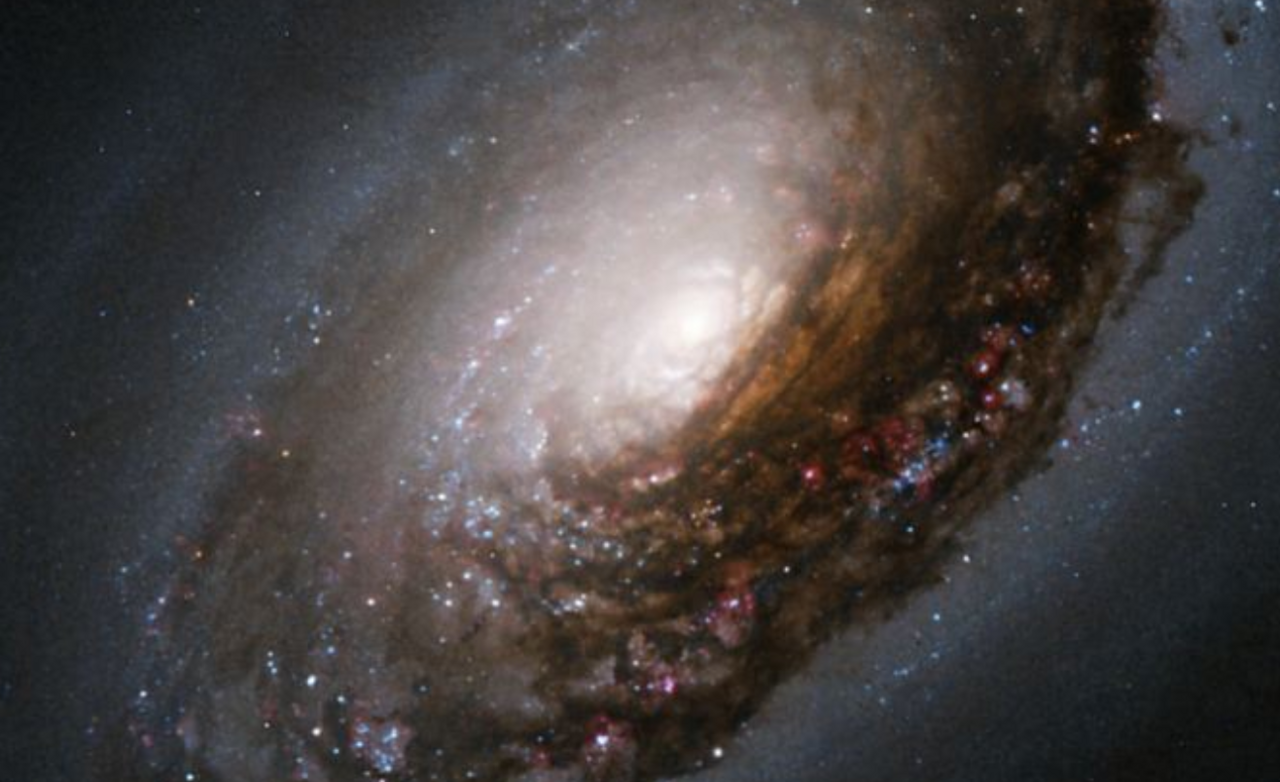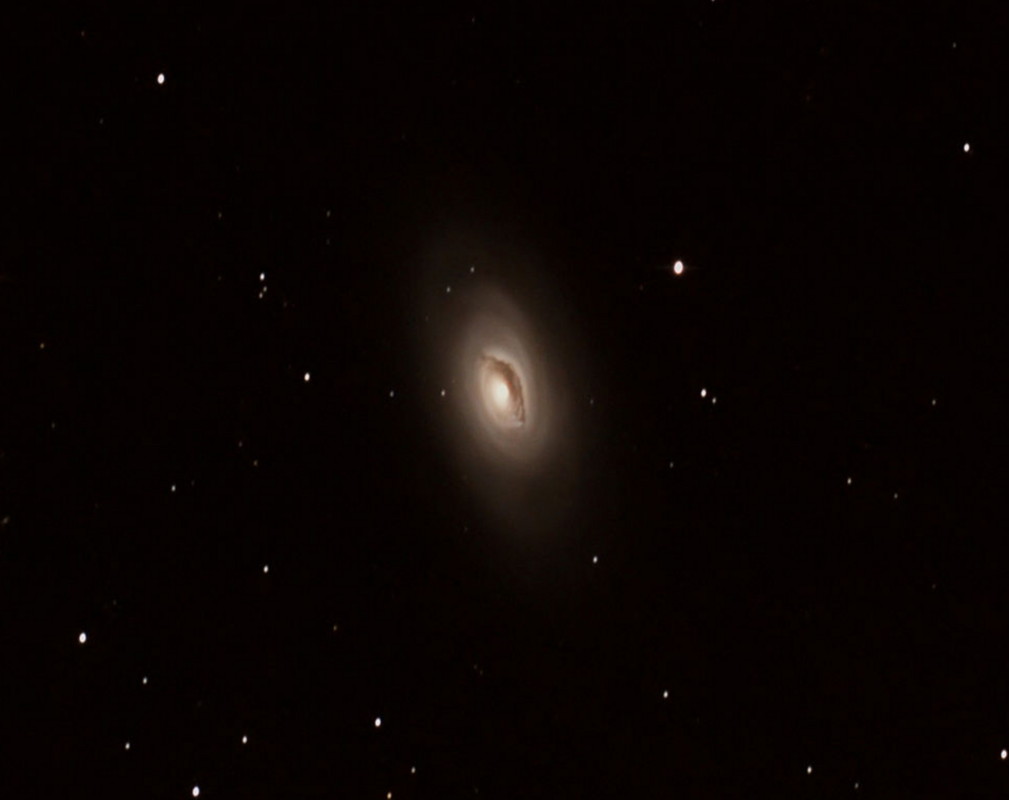Near the 18th century, while searching the night sky for comets, A French astronomer Charles Messier kept noting the presence of fixed/diffused objects he initially mistook for comets. In time he would compile a list of approximately 100 of these type of objects.
One of these objects is known as Messier 64, which is also known as the “Black Eye” or “Evil Eye Galaxy”. This is Located in the Coma Berenices constellation, roughly 24 million light-years from Earth, this spiral galaxy is famous for the dark band of absorbing dust that lies in front of the galaxy’s bright nucleus (relative to Earth). Messier 64 is well known among amateur astronomers because it is discernible with small telescopes and viewing for most hobbyists.

Image of the Black Eye Galaxy (Messier 64), taken with Hubble's Wide Field Planetary Camera 2 (WFPC2). Credit NASA
So how did it get the name “Black Eye Galaxy”? A astronomer by the name of Sir William Herschel dubbed it that, he stated: “A very remarkable object, much elongated, about 12′ long, 4′ or 5′ broad, contains one lucid spot like a star with a small black arch under it, so that it gives one the idea of what is called a black eye, arising from fighting

Messier 64, the Black Eye Galaxy. Credit: Miodrag Sekulic
How to view Messier 64?
While viewing Messier 64 with binocular's is possible, it will require very dark skies for average binoculars and will only show as a very small, oval contrast change. However with telescopes as small as 102mm, its distinctive markings can be seen on dark nights with good clarity!
